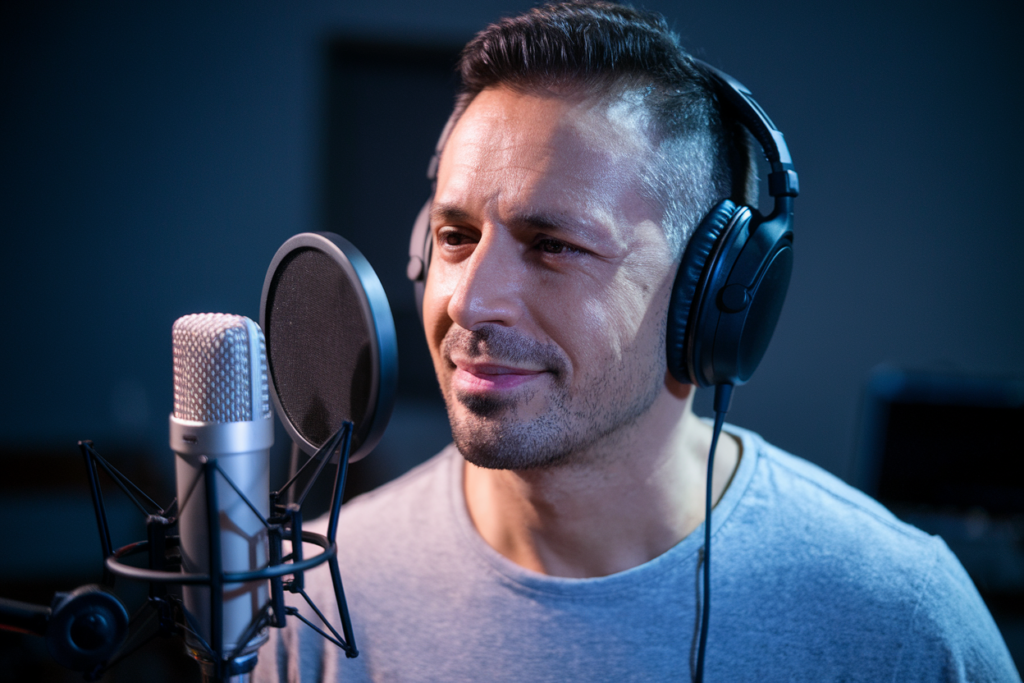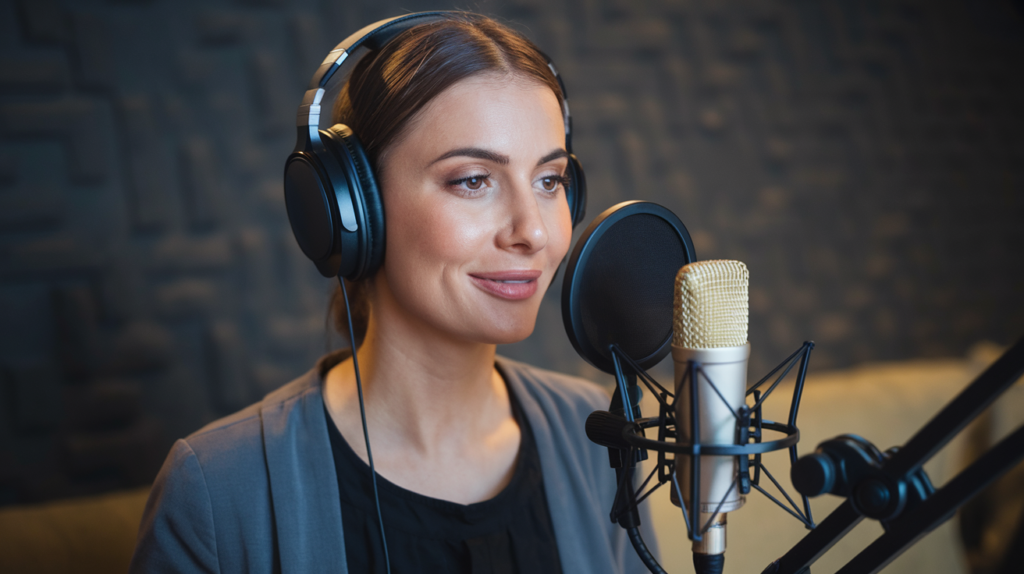Key Takeaways
- Understanding Synchronization: Achieving perfect lip sync in Turkish voiceovers requires a deep grasp of speech nuances and timing to align dialogue with character movements.
- Enhancing Viewer Immersion: Accurate lip syncing significantly improves audience engagement by creating a believable experience, especially in culturally rich narratives.
- Effective Techniques: Utilize phonetic mapping, timing adjustments, collaboration with voice talents, rehearsals, and post-production editing to enhance synchronization quality.
- Navigating Cultural Nuances: Awareness of regional dialects and cultural context is crucial for delivering authentic performances that resonate with local audiences.
- Successful Case Studies: Analyzing examples from Turkish cinema and popular TV shows illustrates the importance of meticulous synchronization in captivating storytelling.
- Future Trends: Stay informed about technological advancements like AI that are transforming voiceover processes, ensuring high-quality results while maintaining authenticity.
Ever wondered why some Turkish voiceovers seem to perfectly match the characters’ lips? It’s not just about great acting; it’s a blend of skillful dubbing and advanced techniques that make all the difference. In a world where visual storytelling reigns, achieving lip-sync accuracy can elevate your content from good to unforgettable.
You might be facing challenges in delivering seamless voiceovers for your projects. Whether you’re a filmmaker or a content creator, understanding how to master this art can save you time and enhance viewer engagement. Dive into the fascinating world of matching lips in Turkish voiceovers, and discover tips and tricks that’ll help you create polished, professional results every time.
Understanding Voiceover Synchronization
Achieving perfect lip sync in Turkish voiceovers involves more than just matching words to visuals. It demands a deep understanding of the nuances in speech and timing, ensuring that every syllable aligns with the character’s movements.
The Importance of Lip Sync
Lip sync accuracy significantly enhances viewer immersion. When dialogue lines up perfectly with mouth movements, it creates a believable experience for the audience. This precision is crucial in Turkish voiceovers, where cultural context and emotional delivery play vital roles. If you’re targeting an audience that values authenticity, investing in quality voiceovers with impeccable lip sync becomes essential.
Techniques for Achieving Match
Several techniques help achieve effective lip sync in voiceovers:
- Phonetic Mapping: Aligning sounds with visual cues requires careful phonetic mapping. Understanding how different sounds are produced can guide you to match them closely with character mouth shapes.
- Timing Adjustments: Adjusting the timing of each line ensures smooth transitions between phrases. Use software tools to visualize waveform patterns; this aids in pinpointing exact moments for optimal synchronization.
- Voice Over Talent Collaboration: Collaborating closely with skilled voice artists enhances the process. Their expertise allows for adjustments that consider both language intricacies and emotional tones.
- Rehearsals and Feedback: Conduct rehearsals where actors practice delivering lines while watching their characters’ motions on screen. Gathering feedback during these sessions helps refine performance and adjust syncing as needed.
- Post-Production Editing: Utilize post-production editing techniques to tweak audio tracks after initial recording sessions, making subtle adjustments for flawless synchronization.
By applying these techniques, you elevate your projects, captivate audiences, and deliver polished results that resonate well within the realm of Turkish voiceovers.
Challenges in Turkish Voiceovers
Turkish voiceovers present unique challenges that require attention to detail and cultural understanding. Achieving the perfect lip-sync accuracy demands more than just technical skills; it involves a deep appreciation of the nuances within the language.
Cultural Nuances
Cultural context plays a significant role in Turkish voiceovers. It’s essential for voice artists to grasp local idioms, humor, and emotional expressions tied to specific regions. For instance, certain phrases may carry different meanings or connotations depending on where they’re used. A skilled voice actor adapts their delivery to reflect these subtleties, ensuring that audiences connect with the content on a personal level. Without this sensitivity, even technically proficient work can fall flat.
Regional Dialects
Turkey is home to various regional dialects that influence pronunciation and intonation. This diversity poses another layer of complexity for voiceover talent working in this space. A one-size-fits-all approach doesn’t cut it here; selecting the right voice over artist who can accurately represent a particular dialect enhances authenticity. Whether it’s Istanbulite or an accent from Eastern Anatolia, each region has its distinct flavor that should resonate through the performance.
In navigating these challenges, filmmakers and content creators benefit significantly by collaborating with experienced professionals who understand both the language and culture intricacies involved in Turkish voiceovers.
Case Studies in Successful Matching Lips
Achieving flawless lip sync in Turkish voiceovers often proves essential for maintaining audience engagement. By examining successful examples, you can gain insight into effective techniques and strategies.
Example from Turkish Cinema
Turkish cinema showcases several instances of masterful lip-syncing that elevate storytelling. In films where emotional delivery is key, voice actors meticulously match their performances to character movements. For example, a well-known drama utilized expert voice talent who adapted their timing and intonation to reflect the on-screen emotions accurately. This alignment not only enhances viewer immersion but also conveys cultural nuances effectively, making the experience more relatable for audiences.
Example from Popular TV Shows
Popular TV shows provide another excellent illustration of successful matching lips in Turkish voiceovers. A recent series gained acclaim for its seamless synchronization between dialogue and visual action. Voice artists collaborated closely with directors during pre-production to ensure perfect timing and expression matched the original performances. The result? An engaging viewing experience that kept audiences coming back week after week.
By analyzing these examples, you can appreciate how important it is to invest time in training your voiceover talent and understanding the intricacies involved in Turkish dubbing.
Future Trends in Turkish Voiceovers
The landscape of Turkish voiceovers is rapidly evolving, driven by technological advancements and shifting audience preferences. Staying ahead in this field requires understanding emerging trends that shape how you create engaging and immersive content.
Advancements in Technology
Technology is transforming the way voiceover projects are produced. Enhanced recording equipment and software streamline the process, allowing for higher quality audio with less effort. Tools that offer real-time feedback during recording sessions enable voice artists to make immediate adjustments, ensuring a better alignment with visual elements. Additionally, improved editing capabilities allow for quicker turnaround times without sacrificing quality. These innovations not only enhance the final product but also create more opportunities for dynamic storytelling within Turkish media.
The Role of AI in Voice Synchronization
Artificial Intelligence (AI) is making waves in voice synchronization, particularly in matching lips accurately during dubbing processes. AI algorithms can analyze speech patterns and timing to suggest optimal phrasing that aligns with on-screen movements. This technology reduces manual effort while maintaining high standards of lip sync accuracy. Plus, AI can help identify regional dialects or cultural nuances essential for authentic delivery by analyzing vast datasets of existing performances. As these tools become more refined, they promise to revolutionize how you approach Turkish voiceovers, paving the way for creative solutions that resonate deeply with audiences.
By embracing these trends and technologies, you ensure your projects stand out in a competitive market while enhancing the overall viewer experience through precise and culturally rich voiceovers.
Conclusion
Mastering lip-sync accuracy in Turkish voiceovers is essential for captivating your audience. By employing advanced techniques and understanding cultural nuances, you can create an immersive experience that resonates with viewers. The challenges may seem daunting but with careful planning and collaboration, you can elevate your projects to new heights.
Investing time in training and utilizing technology will not only streamline your production process but also enhance the quality of your voiceovers. As the landscape evolves, staying informed about trends and innovations will give you a competitive edge. Focus on precise synchronization and emotional delivery, and you’ll foster deeper connections with your audience, ensuring that every project stands out for its quality and authenticity.
Frequently Asked Questions
What is lip-sync accuracy in Turkish voiceovers?
Lip-sync accuracy in Turkish voiceovers refers to the precise alignment of spoken dialogue with the mouth movements of characters on screen. This synchronization enhances viewer immersion and engagement, making it crucial for filmmakers and content creators.
Why is mastering lip sync important for voiceover artists?
Mastering lip sync is essential for voiceover artists because it ensures that their performances resonate with audiences. Accurate synchronization helps convey emotions and cultural nuances, thereby improving storytelling and overall viewer experience.
What techniques improve lip-sync accuracy?
Key techniques to enhance lip-sync accuracy include phonetic mapping, timing adjustments, collaboration with skilled voice talent, conducting rehearsals, and utilizing post-production editing. These methods help deliver polished results that captivate viewers.
What challenges do filmmakers face in Turkish dubbing?
Filmmakers face challenges such as aligning dialogue with character movements while considering cultural nuances and regional dialects. Understanding local idioms and emotional expressions is vital for creating relatable content that connects with audiences.
How can AI assist in achieving perfect lip sync?
AI can analyze speech patterns to suggest optimal phrasing and timing for better synchronization. This technology streamlines production processes while maintaining high standards of lip sync accuracy, enhancing the overall quality of Turkish voiceovers.
Why are case studies important in understanding Turkish dubbing?
Case studies provide real-world examples of successful lip syncing in Turkish cinema and TV shows. They illustrate how expert voice talent applies meticulous timing and emotional delivery to elevate storytelling through effective dubbing practices.
What future trends are shaping Turkish voiceovers?
Future trends include advancements in recording equipment, software improvements, and the integration of AI technologies. These developments enable higher audio quality, faster turnaround times, and more efficient production processes within the Turkish voiceover industry.







